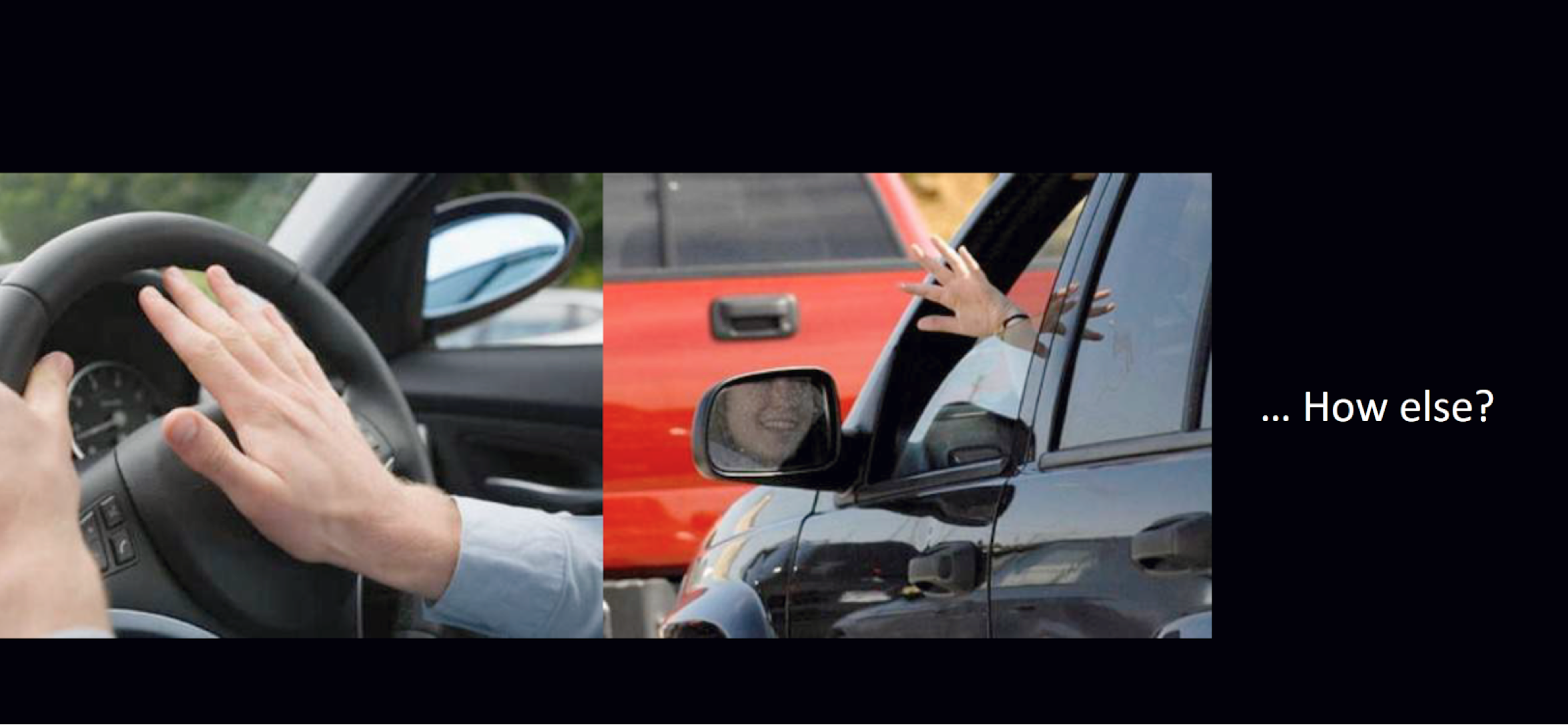Is honking the best we can do?
How can we improve driver-to-driver communication to come?

Motivation
Driving is a social task where drivers should constantly communicate with one another. However, existing driver-to-driver communication methods have mainly focused on safety-related issues, thereby overlooking the social aspect of drivers’ communication needs. We aimed to shed light on drivers’ needs for richer driver-to-driver (D2D) communication and design future D2D communication methods.
Scenario-based Interview & Analysis
We conducted scenario-based semi-structured interviews. Through a literature review, we se-lected four different situations that can be easily observed in today’s road environments.
Moreover, two scenarios from each perspective (sender and receiver) were formulat-ed for each situation. We recruited 14 people of both genders and a range of ages (24-56), driving experience (1-36 years), and nationalities (Kore-ans, Australian, American, and Malaysian).

Initial Findings
1. Drivers Want to Use Social Cues for Affective Messages
When conveying affective messages such as ap-preciation, an apology, or a protest, most participants wanted to use social cues to add nuance to their messages.
“I think emojis would be better. […] In general cases, they(emojis) would appeal to someone better (than other methods).”
2. Drivers Want to Put More Details
Most participants wanted to convey more information via their messages. In particular, one pointed out that blinking and honking had often oversimplified the messages.
“Text would be better. (I just want the message to be delivered) just as it is. Headlight is broken, trunk is open, it it necessary to send correct information.”
3. Drivers Want Varying Scopes of Communication
As the current means of the communication, whether sound or light, does not allow changes of the scope of the signal, these methods often become an obtrusive distraction to nearby drivers. Most participants reported that they had experienced being surprised by car horns, and that they tried not to use them if not necessary
“The messages given to me should be shown to me exclusively.”
+ Drivers Want Different Modalities of Communication Considering Different Perspectives
As senders, participants preferred more auditory methods of communication; as receivers, participants preferred “less intrusive” visual methods.
“Well, I think my attitude just changed. (When I am a sender) it’s me who has to act, right? […] I have to show appreciation, so before (when I was a sender) I preferred the strongest method[…]”
Design Ideas
- The communication method should be able to incorporate social cues when delivering effective messages.
- Second, drivers should be allowed to deliver detailed messages.
- Third, the communication method should allow drivers to select those with whom they want to communicate.

Future Works
Based on the initial design ideas, we are building simulation-based prototypes and conducting quantitative usability evaluation!

Comments